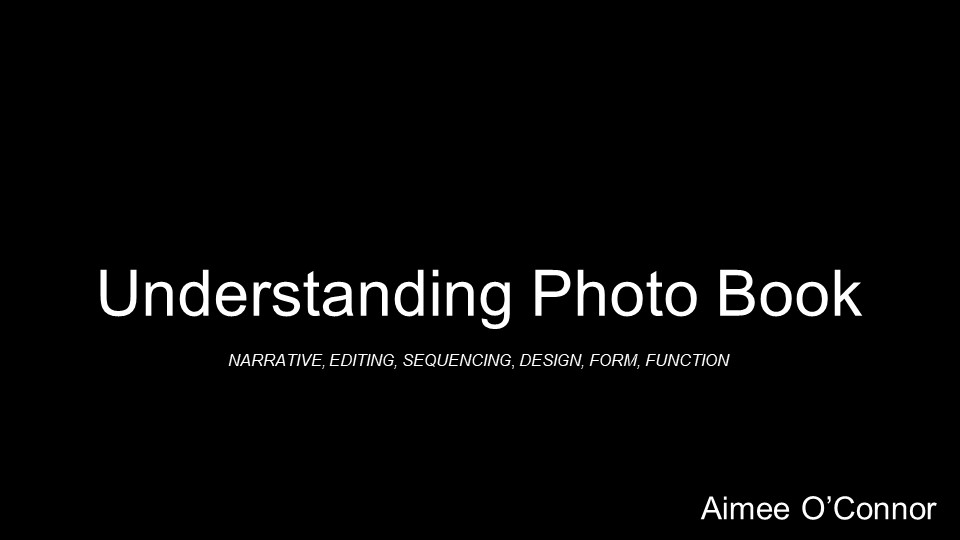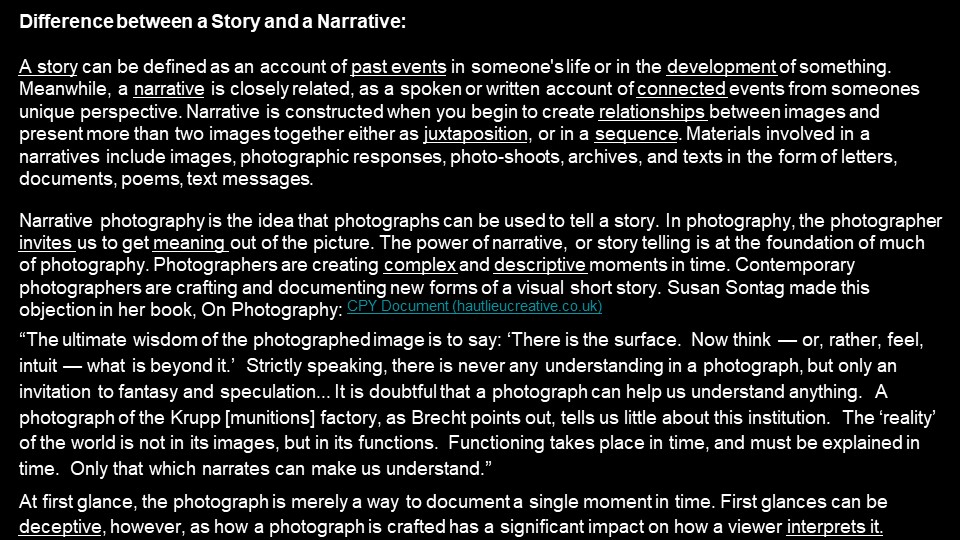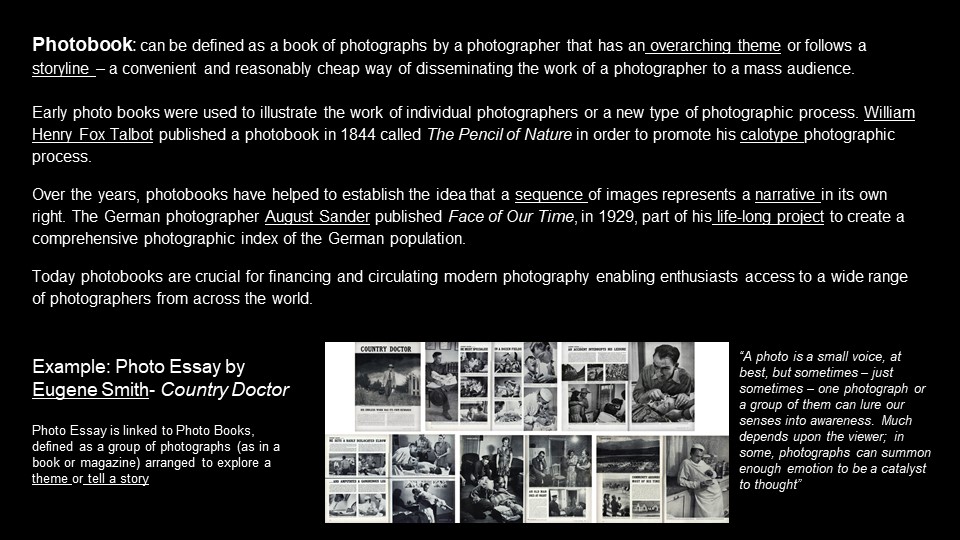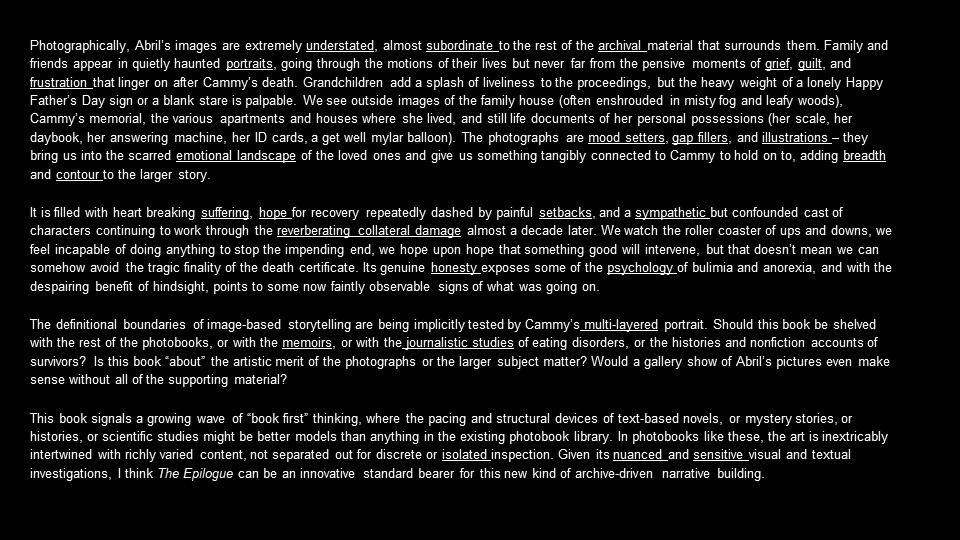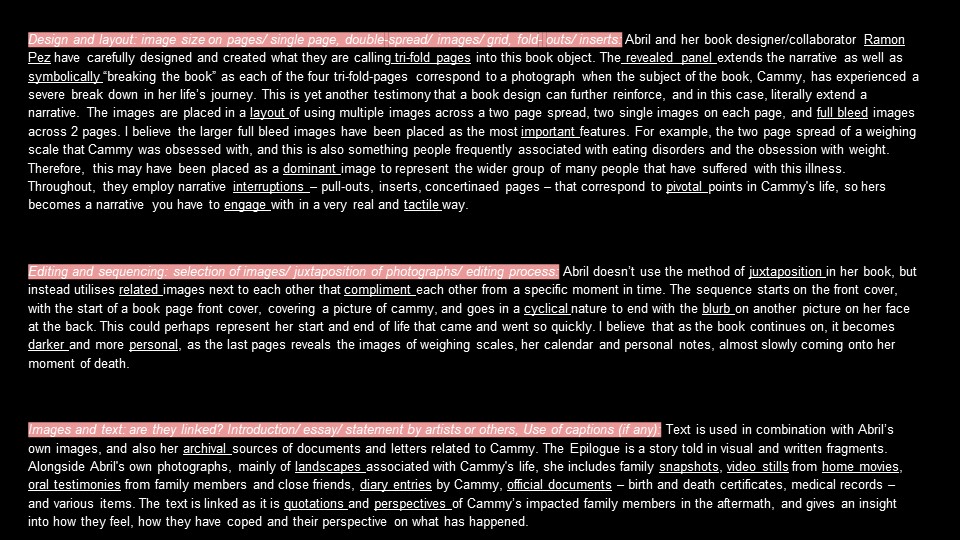Essay Question:
Can personality and identity be expressed in a portrait?
Opening quote:
‘With every breath of nature’s depth, she was becoming more herself.’ – Angie Weiland-Crosby
Introduction: (250-500 words): What is your area study? Which artists will you be analysing and why? How will you be responding to their work and essay question?

Pg 1 (500 words): Historical/ theoretical context within art, photography and visual culture relevant to your area of study. Make links to art movements/ isms and some of the methods employed by critics and historian. Link to powerpoints and resources above about art movements and isms.

Pg 2 (500 words): Analyse first artist/photographer in relation to your essay question. Present and evaluate your own images and responses.

Pg 3 (500 words): Analyse second artist/photographer in relation to your essay question. Present and evaluate your own images and responses.

Pg 4 (500 words): Analyse second artist/photographer in relation to your essay question. Present and evaluate your own images and responses.

Conclusion (250-500 words): Draw parallels, explore differences/ similarities between artists/photographers and that of your own work that you have produced
Bibliography: List all relevant sources used
Danto. The Concept of the Aesthetic <https://plato.stanford.edu/entries/aesthetic-concept/>
Oden, L. Bill Brandt, International Photography Hall of Fame and Museum <https://iphf.org/inductees/bill-brandt/>
Lewis, E. Tate. Albert Renger-Patzsch <https://www.tate.org.uk/whats-on/tate-modern/display/albert-renger-patzsch>
Coplans, J. John Coplans < http://www.artnet.com/artists/john-coplans/>
Literary Sources:















